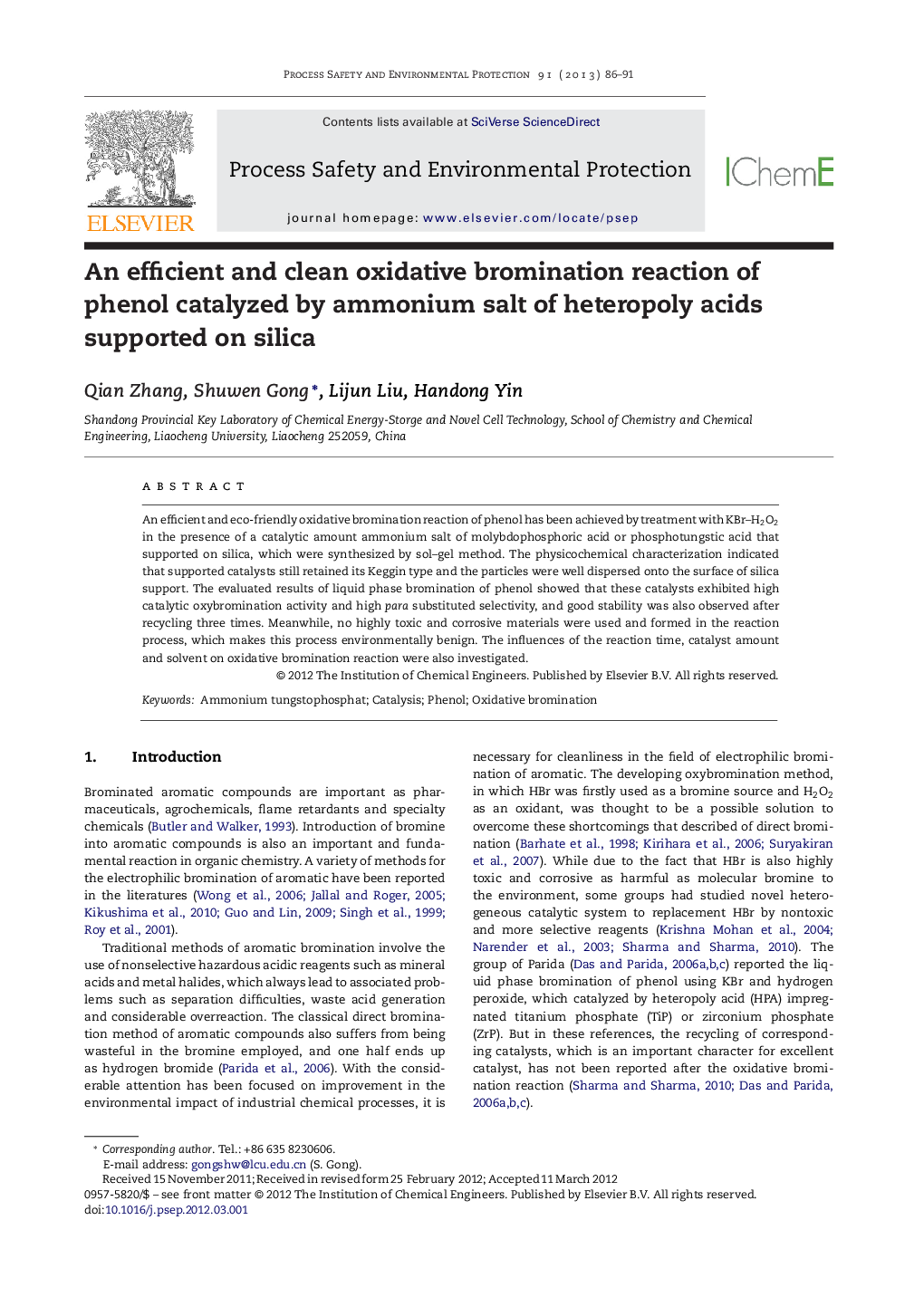| Article ID | Journal | Published Year | Pages | File Type |
|---|---|---|---|---|
| 588237 | Process Safety and Environmental Protection | 2013 | 6 Pages |
An efficient and eco-friendly oxidative bromination reaction of phenol has been achieved by treatment with KBr–H2O2 in the presence of a catalytic amount ammonium salt of molybdophosphoric acid or phosphotungstic acid that supported on silica, which were synthesized by sol–gel method. The physicochemical characterization indicated that supported catalysts still retained its Keggin type and the particles were well dispersed onto the surface of silica support. The evaluated results of liquid phase bromination of phenol showed that these catalysts exhibited high catalytic oxybromination activity and high para substituted selectivity, and good stability was also observed after recycling three times. Meanwhile, no highly toxic and corrosive materials were used and formed in the reaction process, which makes this process environmentally benign. The influences of the reaction time, catalyst amount and solvent on oxidative bromination reaction were also investigated.
Graphical abstractSilica supported ammonium salts of heteropoly acid were successfully synthesized through sol–gel method, which was proved as an effective technology to improve the BET surface area, well dispersed of particles and the stability as a catalyst in oxybromination of phenol.Figure optionsDownload full-size imageDownload high-quality image (85 K)Download as PowerPoint slideHighlights► Silica supported ammonium salt of heteropoly acids that prepared through sol–gel method were firstly used as catalyst in oxidative bromination reaction of phenol. ► An effective and environmental-friendly oxybromination of phenol was achieved. ► The evaluated catalyst exhibited high stability in process of oxybromination.
